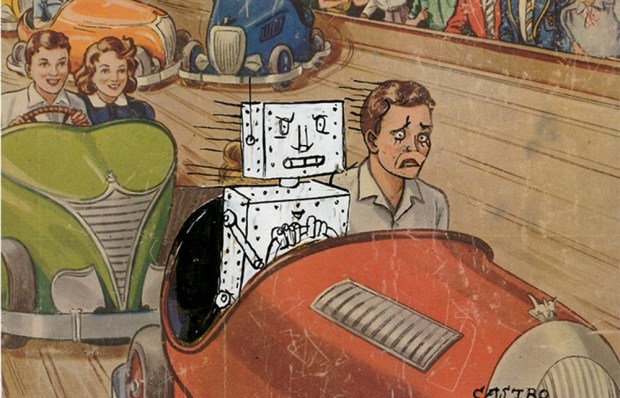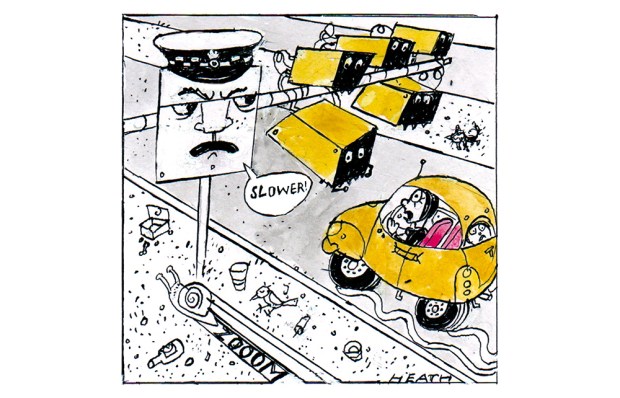I am convinced that when I took my driving test in 1983 I was asked by the examiner, ‘What lane of a three-lane motorway should you use when driving at a speed of 70 mph?’ And I am equally sure that the ‘correct’ answer to this question at that time, as given by the early 1980s version of the Highway Code, was ‘the middle one’.
My memory is that the three lanes of a motorway back then were designated 1) the slow lane, 2) the fast lane and 3) the overtaking lane. Whenever I mention this, however, no one else remembers anything of the kind. Rather predictably, about one in three people then takes the bait and embarks on a long rant about people ‘hogging the middle lane.’
In reality, this practice is much rarer now than it was a few years ago. As one motoring writer observed, middle-lane hogging is one of those problems — along with people leaving their rear fog lights on — which seem to have largely disappeared, but which are permanently retained on the list of things people like to rant about.
What is the rule? Some teutonically minded people say the rule is perfectly clear: you should always pull over to the left when there is space available to do so. Other people (wisely, I think) argue that it makes no sense to make traffic in the left-hand lane any denser than it needs to be, since that will slow everyone down.
I used to take the side of middle-lane ‘hoggers’. However, I now might answer the question in a rather perverse way. Which is to say that the only rule for using the middle lane is that there should be no rule; our instinctive ability to solve the problem may be superior to our ability to codify the solution. In fact, different ‘rules’ seem to apply depending on the level of traffic density and also on how many Audi drivers are on the road at the time (Audi is derived from the Latin verb audire, meaning ‘to drive annoyingly close to the car in front’).
What you have here is a very simple form of culture. A set of tacit rules which emerge to solve a social problem. There is a similar phenomenon among pedestrians: in some countries (including Britain) people instinctively turn to the right when approaching another pedestrian head on; in other parts of the world, people turn left. There is no formal rule: all that matters is that everyone does the same.
This entirely unconscious rule emerges through experience. According to Mehdi Moussaid of the Max Planck Institute in Berlin, if two approaching people guess each other’s intentions correctly, each moving to one side and allowing the other past, then they are likely to choose to move in the same direction the next time they need to avoid a collision. Eventually, and entirely without any conscious design, a local norm develops.
This explains why crowded multicultural places such as international airports can be fiendishly difficult to navigate, since all norms break down. To complicate things further, the distance at which people step to one side may vary from one culture to another. To many Europeans, Indian crowd behaviour may appear utterly bizarre and vice versa.
So, for the two decades or so in which driverless cars will have to share the roads with human drivers, safety and legality are not enough. Will they also be intelligent enough to adapt to local driving culture, which varies enormously across the world? Or will they drive perfectly safely and legally while annoying the hell out of the rest of us? It is the automotive equivalent of the Turing Test.
Got something to add? Join the discussion and comment below.
Get 10 issues for just $10
Subscribe to The Spectator Australia today for the next 10 magazine issues, plus full online access, for just $10.
Rory Sutherland is vice-chairman of Ogilvy Group UK.
You might disagree with half of it, but you’ll enjoy reading all of it. Try your first month for free, then just $2 a week for the remainder of your first year.















Comments
Don't miss out
Join the conversation with other Spectator Australia readers. Subscribe to leave a comment.
SUBSCRIBEAlready a subscriber? Log in